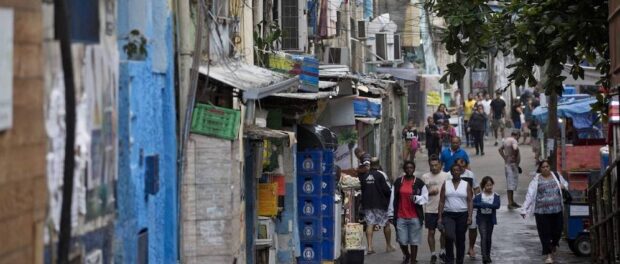
For the original article in Portuguese by Felipe Betim published in EL PAÍS click here.
The Spaniard María Esperanza Jiménez Ruiz, 67, was killed by the Military Police when she visited the Rocinha favela in Rio de Janeiro on Monday. Many of the reactions posted on social media have been the same: “Rocinha is not a tourist destination, for the love of God,” an EL PAÍS reader complained on social media. “A favela is not a place to go sightseeing?! She didn’t obey, she died!” said another. Over the years favela tourism has become a growing feature of daily life in the city. During the Rio Olympics, the presence of Pacification Police Units (UPPs)—the majority of which were installed near Rio’s main tourism sites—gave people a sense of security, and they began to make casual plans to visit a favela, to see life beyond the tourist sidewalks of Copacabana.
Sightseeing packages which included favela tours of Vidigal (near Leblon) and Santa Marta (near Botafogo) were growing. Jeeps that traversed the city towards Rocinha, with tourists sitting up top as if they were going on a safari, became a part of the urban landscape. Favela residents became used to living with the daily visit of blond, sun-burnt gringos, curious to know how they lived and excited to see Rio’s hilltop views. Vidigal became one of the most trendy places in the city, with new inhabitants from outside [the favela] coming to live there and hotels and restaurants on its peak with exorbitant prices and sublime views.
Amidst this surge of tourism was the rise of so-called community tourism, led by residents of the favelas themselves like Cosme Felippsen, who lives in Providência, the oldest favela in Rio, close to the city’s Port Zone. “I was eight years old in 1997, when the favela celebrated its 100th birthday. Today, the favela is 120 years old and it’s been twenty years since I gave my first tour. A couple asked me to take them up the hill and they gave me a popsicle in return. Now, I earn money and beer,” he says. Later, as a member of the Methodist church, he took American missionaries to see the favela and other city sites.
In 2013, he started Providência Tourism, two years later he qualified as a guide, and today, he organizes the Rolé dos Favelados (Stroll of the Favelados): trips into Rio favela communities with activist residents. “It’s a tour and a debate about what the favela is and about its culture; a discussion about the city and human rights… A tour of activism led by favela residents,” he explains. Today, the majority of those who visit favelas with him are Brazilians and also Rio residents, including those who live in other favelas in the city. ‘There is an exchange between the asfalto [“formal city”] and the favela that is more than just tourism,” he says.
After what happened with the Spanish tourist, Felippsen reports that tourists are more scared. Cosme opines that there were errors made by all involved in the incident. “I’ve canceled a tour of Complexo do Alemão because of a wave of shooting, just as I’ve canceled a tour of Providência because I thought the climate wasn’t good. If a local guide was with the Spanish tourist, maybe they wouldn’t have taken that route, or they would have acted differently when they passed the police. You have to open the car windows and drive past very slowly, and be cautious around anyone who is armed.” He proudly recounts how he has given about a thousand tours of Providência and never had a problem.
Even so, Cosme vehemently criticizes those who say that you shouldn’t go on a favela tour. “If it’s wrong to visit because it’s dangerous, it must be wrong to live there, right?” he asks. “At this very moment that we’re talking, children are dying. And nobody cares. People want to go to enjoy the samba, have a beer, but then something bad happens and they turn against the favela and distance themselves from it.” He continues: “They [the police] mess up and then blame the tour guide… What is happening here is not a war; it is the extermination of a poor, black and favela-dwelling population.”
With the death of María Esperanza, we now know that tourism in favelas is part of daily life, just like the danger of death for those who live in and pass through them.
